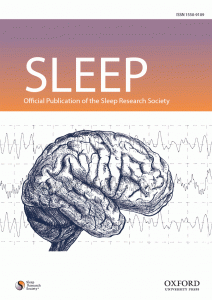The mission of SLEEP® is to publish innovative, high-impact research findings in sleep and circadian science across the basic, translational, and clinical research spectrum.
Latest topics of this journal:
Sleep Current Issue
Uncovering the overlooked burden: insights from Taiwan on central hypersomnolence
The underestimation and diagnostic challenges of hypersomnolence disorders, including narcolepsy (NT) and idiopathic hypersomnia (IH), are well recognized. First, although diagnostic criteria are continuously being revised, they remain ambiguous o...
Author:
Posted: September 28, 2025, 12:00 am
Pre-shift work chronotype matters: resilience as a mediator to shift work tolerance
Shift work is an essential aspect of modern society’s 24/7 operations and is particularly indispensable in the medical field. Due to circadian misalignment and reduced sleep during biologically unfavorable hours with shift schedules, shift workers...
Author:
Posted: September 19, 2025, 12:00 am
Is COMISA another opportunity for use of incretin drugs?
Obstructive sleep apneaInsomniaGLP-1 agonistsIncretins
Author:
Posted: September 13, 2025, 12:00 am
It’s not just the brain that sleeps. A commentary on “Association of Novel EEG Biomarkers of Sleep Depth and Cortical Arousability with Cardiac Autonomic Modulation in Adolescents” by Rahawi et al.
Sleep provides a much-needed cardiovascular holiday [1] in which stress on the cardiovascular system is relieved, with decreases in heart rate (HR), systolic blood pressure, and diastolic blood pressure for several hours relative to the level of a...
Author:
Posted: September 12, 2025, 12:00 am
Between sound and sleep: a perspective on Sonic Sleep Aids
AbstractSleep disturbances are prevalent in the general population, coinciding with a surge in the availability and use of digital sleep aids. Among these, standalone audio-based tools, termed Sonic Sleep Aids (SSA), such as sleep music, ambient s...
Author:
Posted: September 11, 2025, 12:00 am
In response to the commentary by Cirelli et al. to our recent meta-analysis on spine changes following sleep deprivation
sleep and the brainsleep deprivationsleep restriction
Author:
Posted: September 8, 2025, 12:00 am
Melatonin as an adjuvant treatment for atopic dermatitis
Associação Fundo de Incentivo à Pesquisa (AFIP) and the São Paulo Research FoundationFAPESP#2020/13467-8 to MLA
Author:
Posted: September 8, 2025, 12:00 am
Weekly sleep loss is associated with reduced cortical glutathione and antioxidant capacity in adolescents
Author:
Posted: September 5, 2025, 12:00 am

